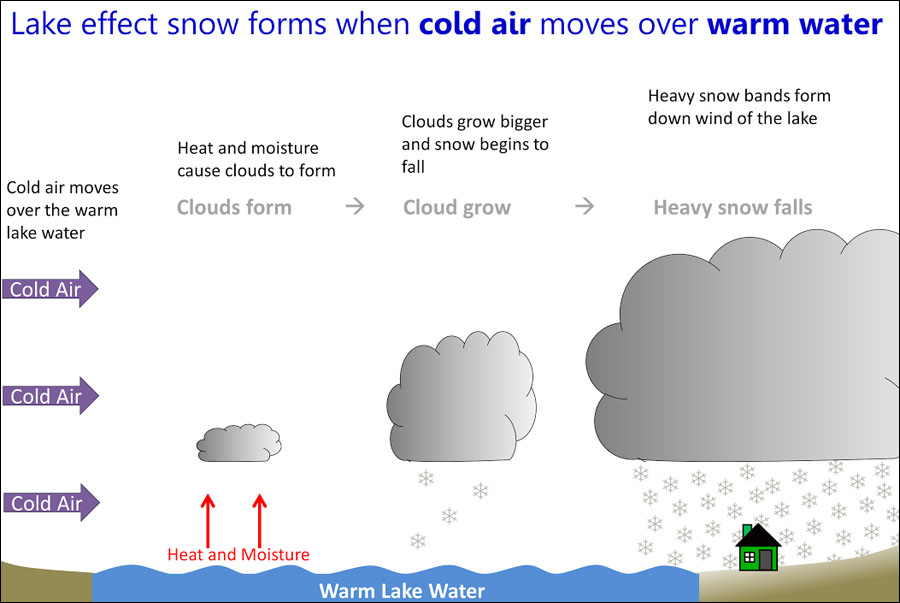Important Facts For Prelims
Lake-Effect Snow
- 06 Dec 2024
- 2 min read
Why in News?
Recently, parts of upstate New York, Pennsylvania, Ohio, and Michigan, situated along the Great Lakes of North America, witnessed "lake-effect snow."
- A heavy snowstorm caused by this phenomenon near Lake Erie in New York has transformed homes into ice-covered igloos.
What is Lake-Effect Snow?
- Definition: Lake-effect snow is a localized weather phenomenon characterized by heavy snowfall that occurs near large bodies of water, such as the Great Lakes in North America.
- It typically happens during colder months when cold air passes over relatively warmer lake surfaces, resulting in intense and narrow bands of snowfall.
- Mechanism of Formation:
- Cold Air Movement: Cold air often from Canada, flows over the unfrozen, warmer waters of the Great Lakes in North America.
- The lakes transfer heat and moisture to the cold air at the surface.
- Cloud Formation: The warm, moist air rises, cools rapidly in the colder atmosphere above, and condenses to form clouds.
- Snowfall: These clouds develop into narrow bands that produce intense snowfall, often at rates of 2–3 inches or more per hour.
Great Lakes of North America
- The Great Lakes, consisting of Superior, Michigan, Huron, Erie, and Ontario (from west to east), are among the most significant freshwater ecosystems in the world.
- Geography and Scope: The Great Lakes basin encompasses large parts of two nations, the United States and Canada. Except for Lake Michigan, the Great Lakes form a natural border between Canada and the United States.
- The lakes connect to the Atlantic Ocean via the Saint Lawrence River, and to the Mississippi River basin through the Illinois Waterway.
- Global Significance: The American Great Lakes account for 21% of the Earth's surface freshwater.






